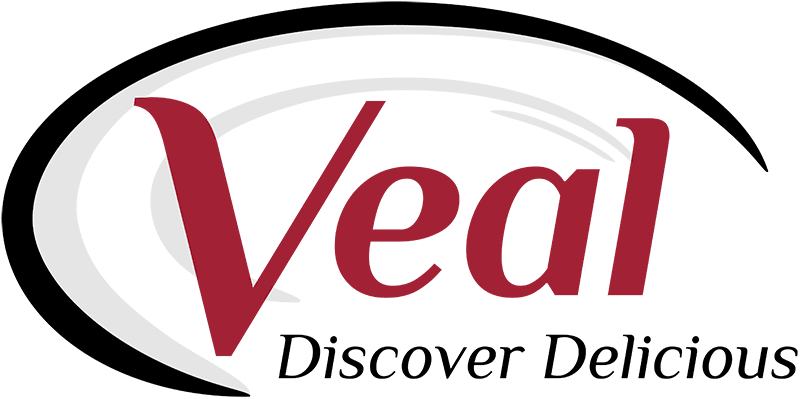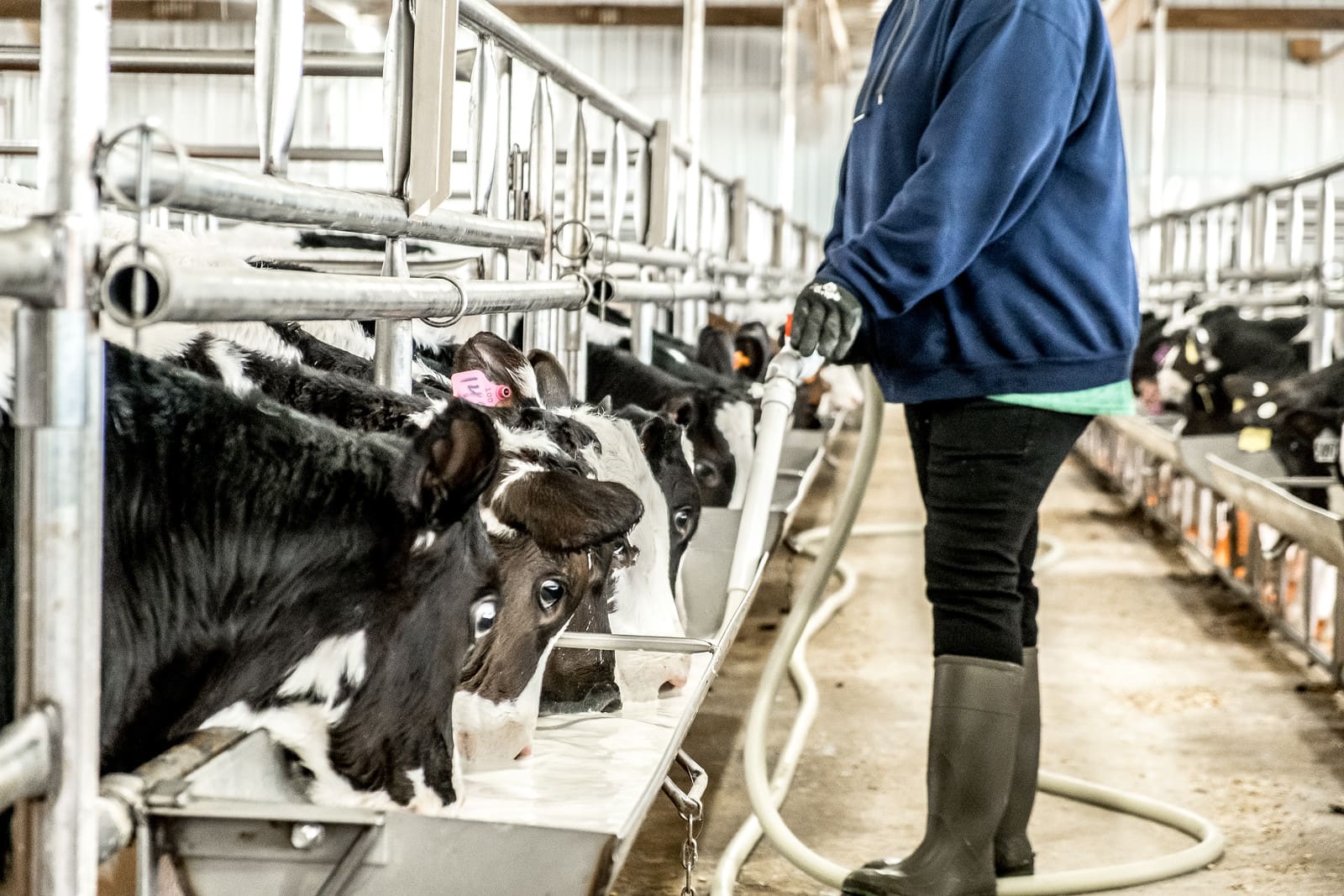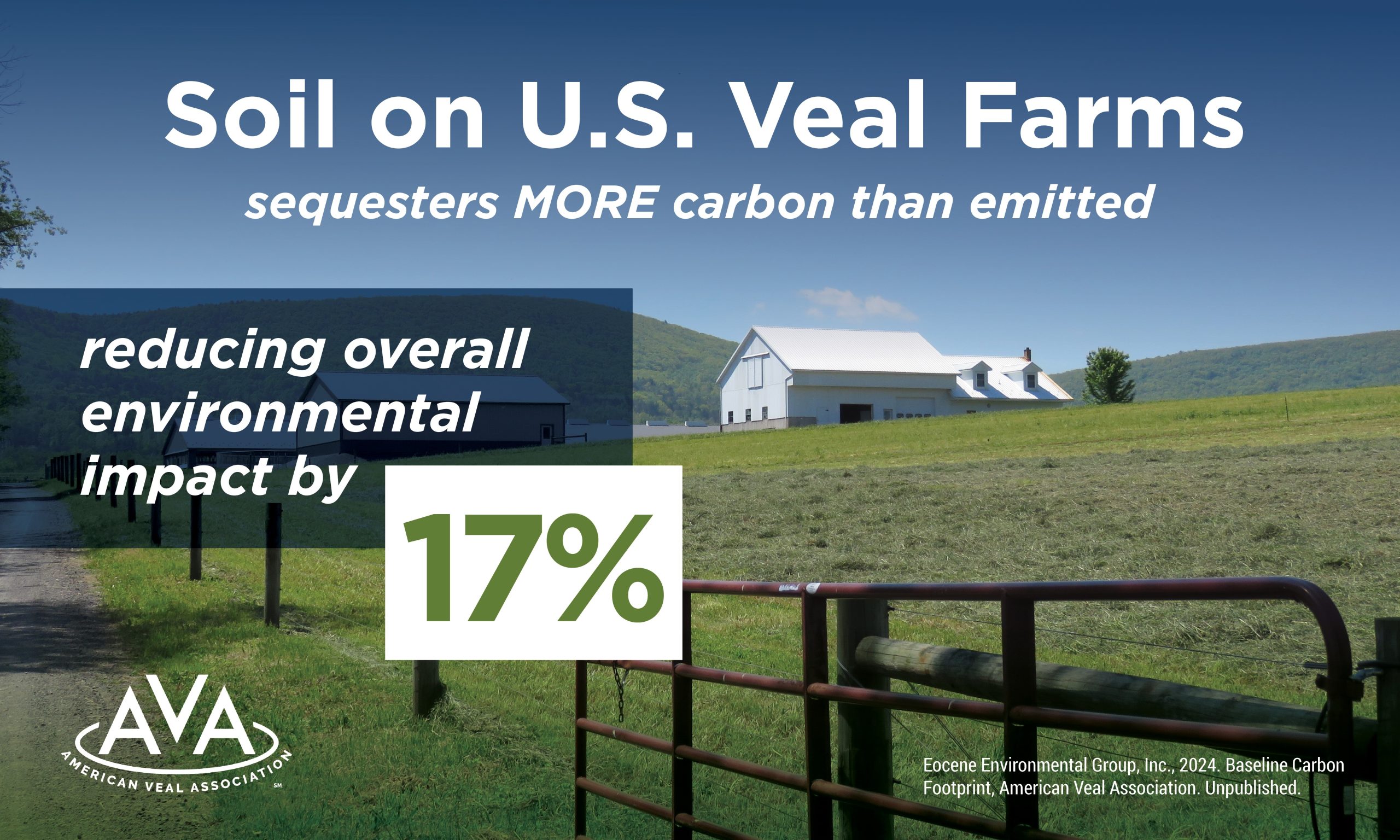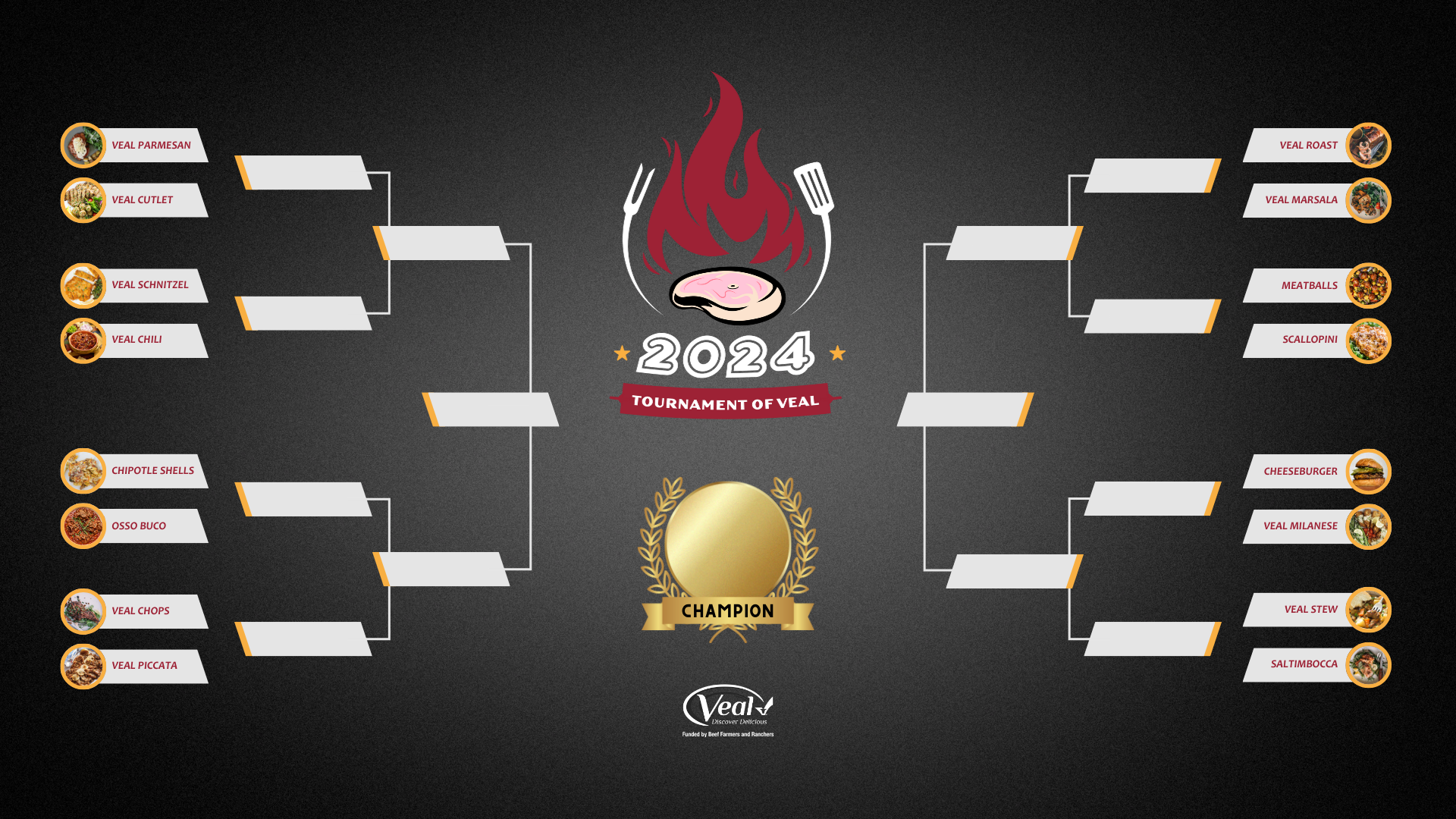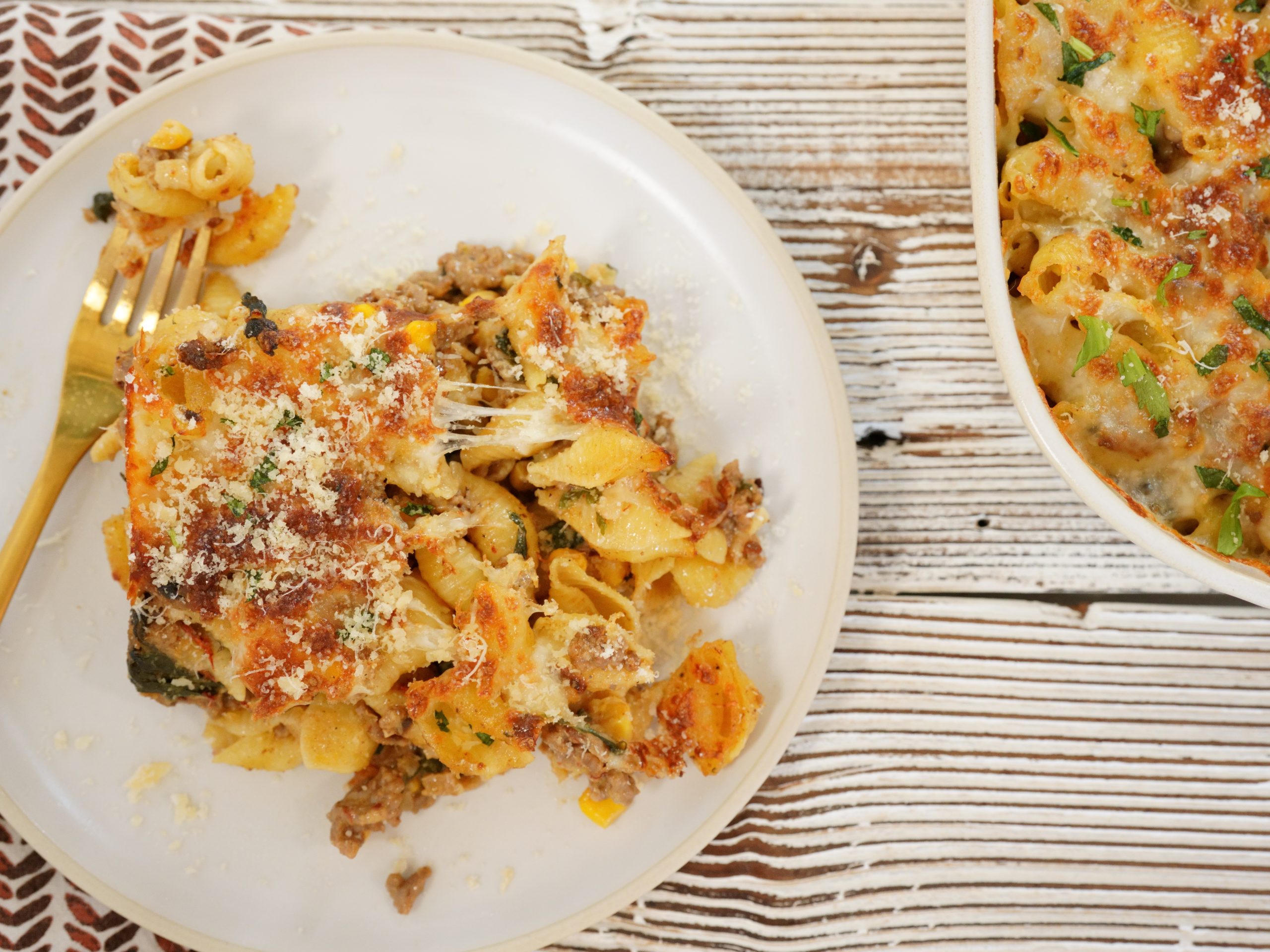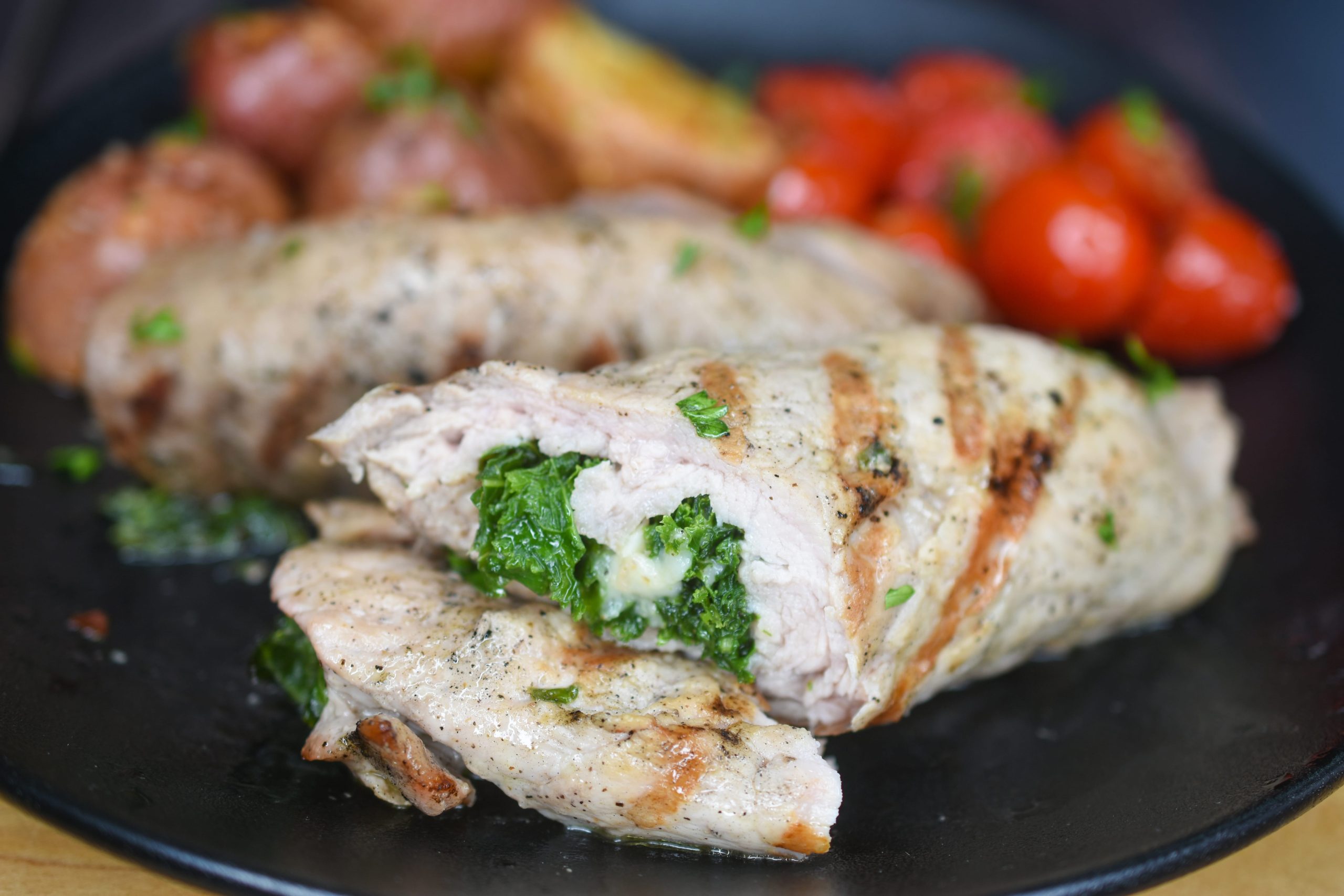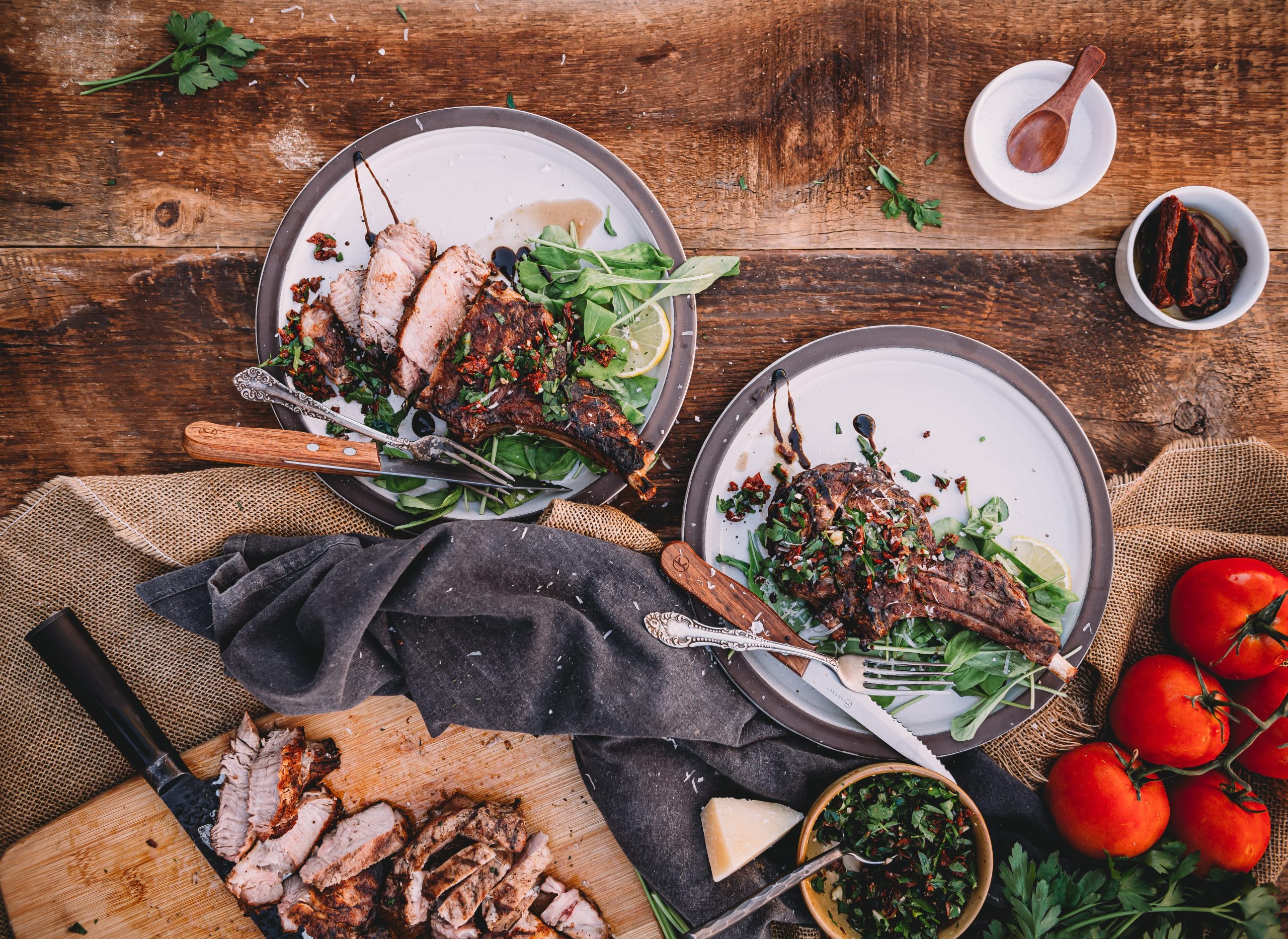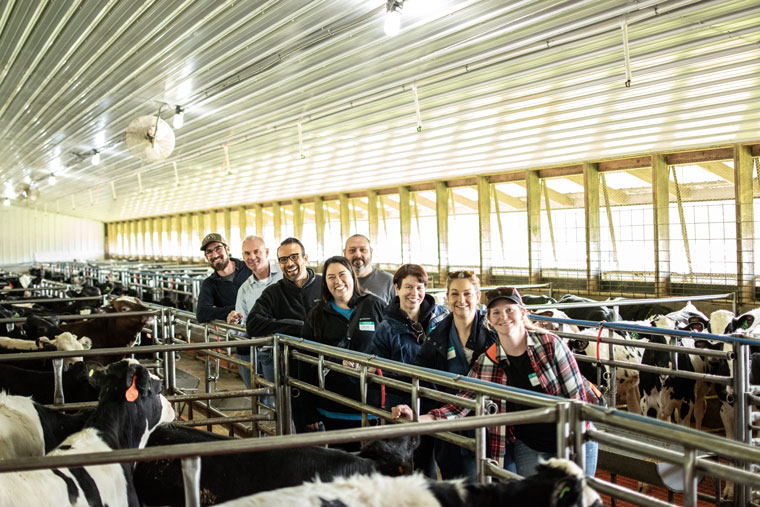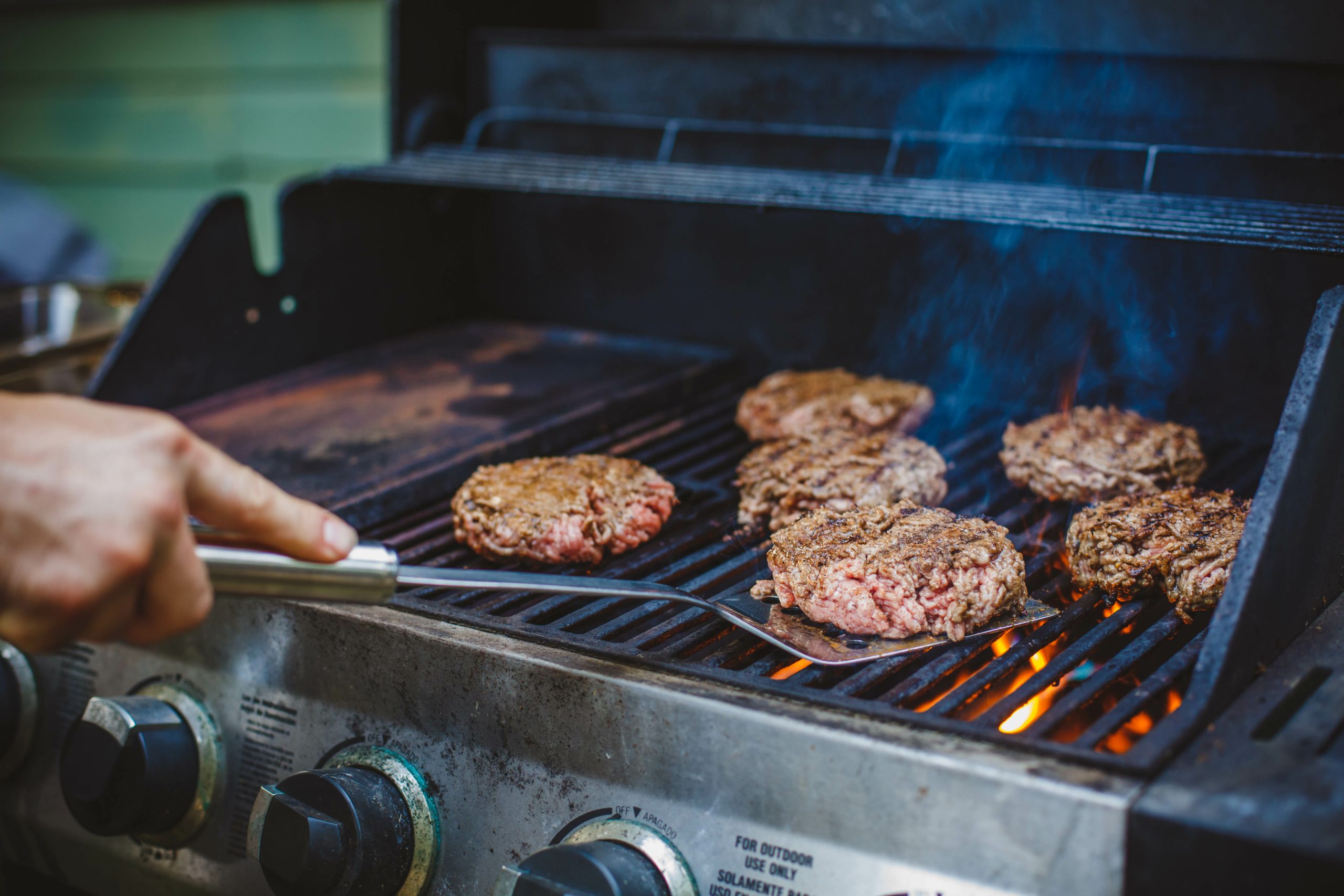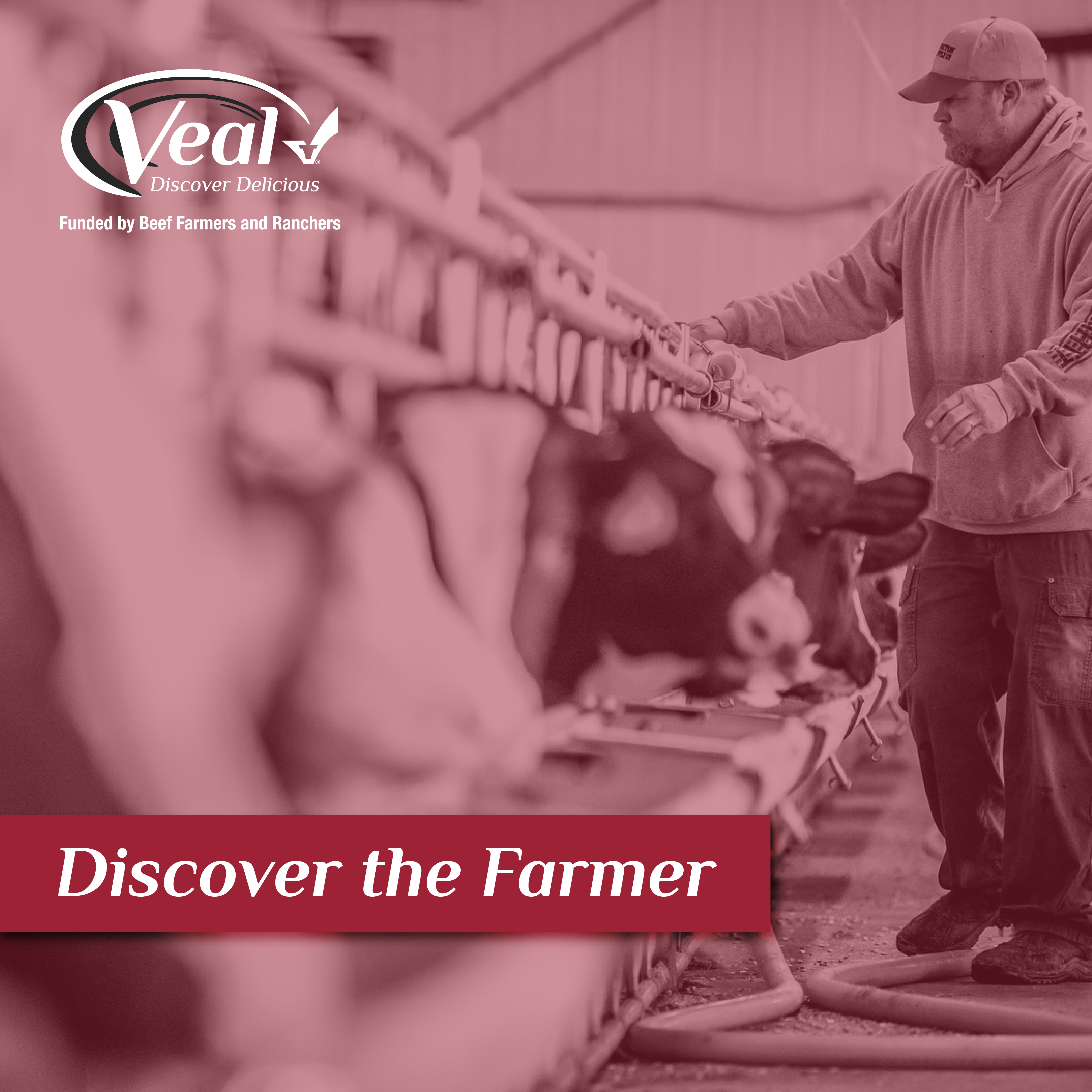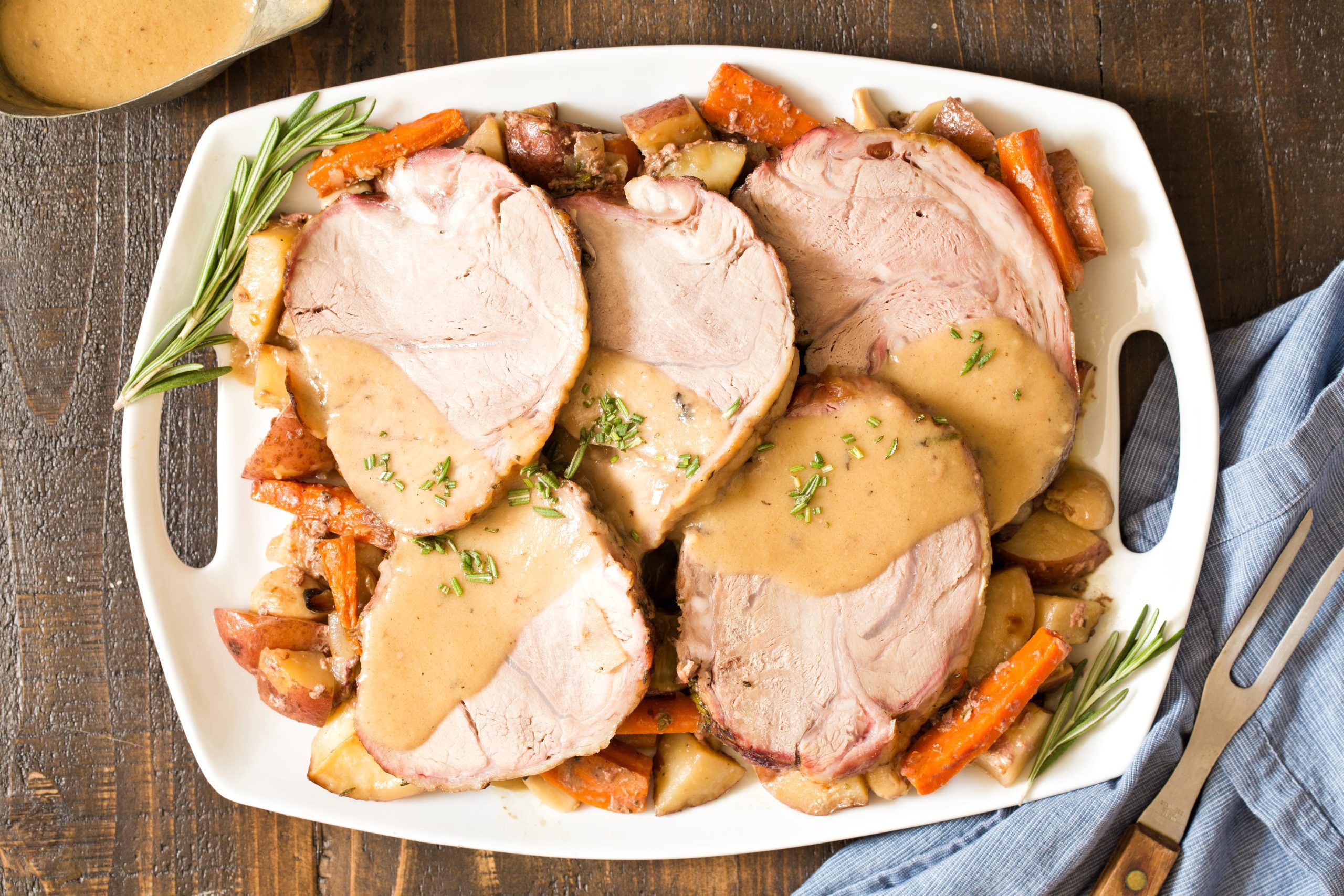Do you have more questions about how veal calves are raised?
Great! Let’s get started with a few commonly asked questions.
What is veal?
Veal is a meat from dairy beef animals harvested at about 500 pounds. Dairy cows give birth once a year in order to continue producing milk. While female calves grow up to serve as cows in the milking herd, male (bull) calves are either sold to veal farmers or beef farmers. Milk-fed veal calves are raised for 6 months and weigh about 500 pounds when marketed as veal. Other farmers and ranchers raise calves to approximately 1200 pounds. This takes about 18 months and then they are marketed as beef.
How old and how big are veal calves when they are marketed?
Veal calves raised for about 22 weeks and harvested at 500 pounds. They are bigger than a pig and older than a turkey at the time of harvest.
What do veal calves eat?
Veal calves receive a milk formula, water and grain daily. They are raised for about 22 weeks to a market weight of 500 pounds or more.
Are veal calves anemic?
Veal calves receive iron and other nutrients in the milk and feed they are given daily. A nutritionist analyzes their feed to ensure it provides all the nutrients calves need to be healthy and grow.
Are veal calves raised in crates?
Veal calves are raised in group pens and without tethers. Calves have space to stand up, lay down, turn around, groom themselves and socialize with other calves. Newborn calves do start out in individual pens because they are born with no immunity. It is critically important to their health and wellbeing to not have direct contact with other calves until they build immunity to protect them from sickness and disease. The individual pens allow provide ample space for calves to stand up, lay down, turn around, and groom themselves.
Is veal meat inspected to ensure safety?
Once calves leave the farm, they are inspected by federal and state agencies throughout each step of the production process to ensure food safety. All state and federal meat inspection is overseen by the United States Department of Agriculture’s (USDA) Food Safety Inspection Service (FSIS), which regulates food safety standards for raw meat. FSIS inspectors work within meat processing and packing plants to ensure compliance. Only raw meat that meets FSIS standards for safety, wholesomeness and labeling is given a USDA seal. Veal calves are inspected twice before processing by the USDA. Federally-inspected meat plants are subject to the Humane Slaughter Act, which is enforced by USDA inspectors who are in meat packing plants during every minute of operation. If tests produce any questionable results, then the meat never reaches the food supply.
Did you know?
- Every Holstein bull calf that goes for veal is one less steer in the feedlot. A 500-pound calf produces one-third of the meat it would if raised all the way through to a finished steer.
- Milk-fed veal industry embraces farm to market traceability.
- Practices such as castration, dehorning, and tail docking are not necessary in raising veal. Hormone implants are not permitted for use in veal production.
